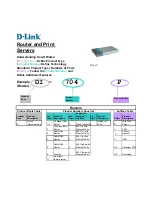
and therefore the setting of the path mode is not required in this case. To set the
ATM mode as the VDSL2 path mode, select
atm
. To set the PTM mode as the
VDSL2 path mode, select
ptm
. The default setting
both
is recommended. When
both
is selected, both modes are supported.
–
interleaved-delay
: indicates the interleave delay. A zero interleave delay
corresponds to the fast mode. In the fast mode, the interleave delay is short, but
the error correction capability is weak. A non-zero interleave delay corresponds
to the interleave mode. The longer the interleave delay, the greater the interleave
depth. In the interleave mode, the greater the interleave depth, the stronger the error
correction capability, but the longer the delay.
–
inp
: indicates the impulse noise protection. The INP is a parameter that describes
the line capability of resisting impulse interference. The INP affects the port rate.
If the INP is 1, it indicates that the current channel can resist the impulse noise in
1 DMT character length. The interleave delay is related to the INP. In the fast
mode, the INP is meaningless.
–
rate
: indicates the line rate. During line activation, a proper rate between the preset
maximum rate and minimum rate is determined through automatic negotiation
according to the line condition and the profile configuration. The user rate can be
restricted by this rate or the rate set in the traffic profile bound to the user. When
both rates function, the lower rate is selected as the user rate.
3.
Run the
vdsl line-template quickadd
command to quickly add a VDSL2 line
template, or run the
vdsl line-template add
command to interactively add a VDSL2
line template.
A VDSL2 line template consists of a VDSL2 line profile and a VDSL2 channel profile.
To activate a VDSL2 port, bind a VDSL2 line template to the port.
l
Configure a VDSL2 alarm template.
1.
Run the
vdsl alarm-profile quickadd
command to quickly add a VDSL2 line alarm
profile, or run the
vdsl alarm-profile add
command to interactively add a VDSL2
line alarm profile.
2.
Run the
vdsl channel-alarm-profile quickadd
command to quickly add a VDSL2
channel alarm profile, or run the
vdsl channel-alarm-profile add
command to
interactively add a VDSL2 channel alarm profile.
3.
Run the
vdsl alarm-template quickadd
command to quickly add a VDSL2 alarm
template, or run the
vdsl alarm-template add
command to interactively add a VDSL2
alarm template.
A VDSL2 alarm template consists of a VDSL2 line alarm profile and a VDSL2
channel alarm profile. Bind a VDSL2 alarm template rather than a VDSL2 line alarm
profile or a VDSL2 channel alarm profile to a VDSL port.
----End
Example
To add VDSL2 profile 3 with these parameters, assume that:
l
Downstream rate: 2048 kbit/s
l
Channel mode: interleave mode
l
Downstream maximum interleave delay: 8 ms
l
Upstream maximum interleave delay: 2 ms
SmartAX MA5616 Multi-service Access Module
Configuration Guide
3 Basic Configuration
Issue 04 (2011-10-30)
Huawei Proprietary and Confidential
Copyright © Huawei Technologies Co., Ltd.
63
















































